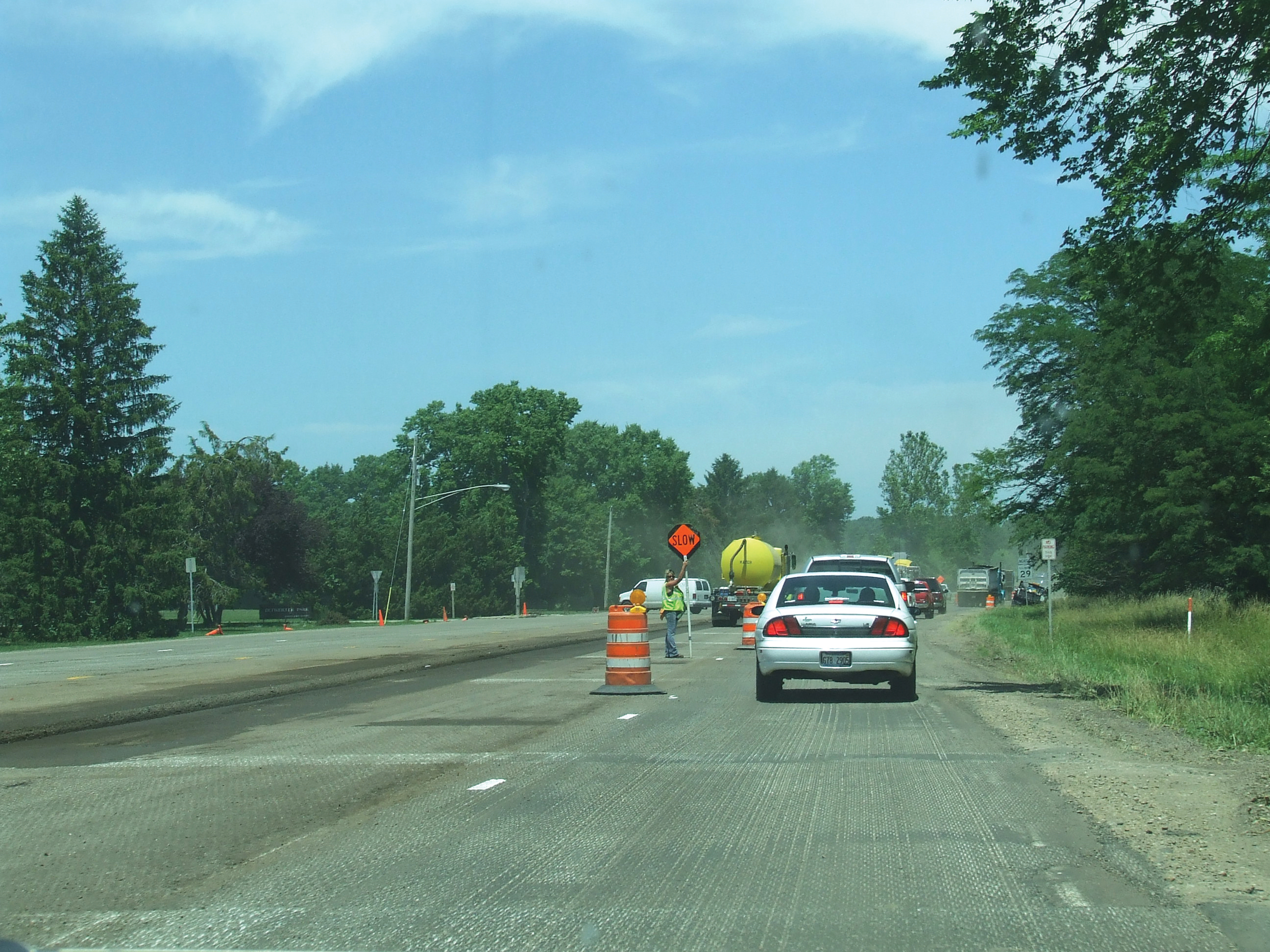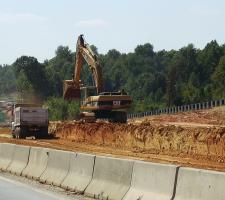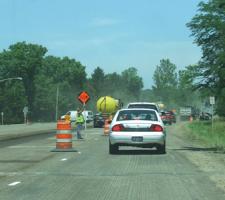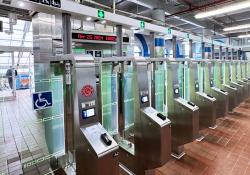
The Texas Transportation Institute's Jerry Ullman talks about the state of the art in work zone safety in the US
Work zones are places where, perhaps more than anywhere else on the road network, mobility and safety are strongly linked. Historically, field crews and contractors wanted vehicles in work zones to be moving as slowly as possible, assuming that made conditions the safest for work crews. We are though starting to see a shift in such thinking with the realisation that excessive delays or slow-downs not only affect traveller mobility but give rise to more instances of road rage and other undesirable behaviour.
"Back in the early 2000s, the USDOT's
"Subpart J decrees that state transportation agencies have a policy in place to consider and mitigate the safety and mobility impacts of work zones. If there are to be significant delays as a result of work zone activity, a transportation management plan needs to be developed which encompasses the work zone itself, public information, diversions to other routes and modal shifts as appropriate. Since implementation of the Rule in 2004, state transportation agencies have worked steadily to comply, which has led to an overall improvement in the mindsets of both the public and private sectors.
"More recently, FHWA expanded another part of federal regulations (Subpart K) to further emphasise the safety of both the motoring public and work zone operatives. It encourages highways agencies to give sufficient consideration to the use of positive barrier separation of workers and traffic whenever appropriate, and to consider other strategies to improve work safety when positive barriers are not feasible. In some cases, it may be best to totally close the facility while work is being performed and completely eliminate interaction between the workforce and moving traffic. Historically, politicians have been very nervous of doing things like taking whole sections of infrastructure out of commission but people do understand and can cope if they're informed and given enough forewarning. The public can actually be very accommodating if there's a 'one-time deal' rather than a seemingly endless, drip-drip of roadworks.
"We're now starting to see some European technologies being deployed. Steel
"So over the last 10 years we've made significant progress in this area. It has been interesting to watch how fast word has travelled across the country. The public, once there's a realisation that there are ways to get things 'right', can exert considerable pressure on a state highway agency. Delay is less and less acceptable, which has led to a decrease in peak-hour working in travel lanes. We see very few peak-hour lane closures by comparison with a few years ago. Agencies and contractors now accomplish much of the work previously done with long-term lane closures through innovative work zone designs and/or temporary lane closures at night and on weekends."
ITS utilisation and challenges
"We're seeing more technology deployed to give road operators and users better travel time and queue warning information. ITS is becoming more mainstream although some agencies are still struggling to justify the cost. We still don't have good means of calculating how the cost offsets against delay and dissatisfaction."Another capability gap presently is our ability to provide travellers with precise advance information about lane closures and other significant work activities. Travellers want to know when, where, how long, and how bad the effects of a future work activity will be so that they can adapt. Current technology allows agencies and contractors to provide real-time condition information, which does help some. However, we are farther away from providing accurate information about events that will happen in the future.
"Focus groups and other studies with drivers have shown us that, especially when it comes to planned events, they want accuracy and detail. If, for instance, an overnight lane closure is widely advertised and then doesn't happen because a contractor was not ready, credibility is diminished. The public has seen that really big high-profile events such as full road closures can be coordinated and adequately advertised and trusted. We need to learn from those and shrink down the scale to where we can do that for more mundane activities that also significantly impact travels. If people's reactions to information are better, then contractors can better control what actually happens in and around a work zone," Ullman continues.
"There are both procedural and technical solutions. We need to find better ways of sharing data between contractors, work zone field staff, highway agency traffic management personnel and operations, and the media. For example, is the local Traffic Management Centre [TMC] set up and tied in to the field staff to monitor and document what goes on in the work zone? Is there the ability to mesh TMC and contractor data?
"Also, on an instrumented roadway, are traffic sensors going to be available to monitor conditions while construction work is in progress, or will the work knock out or even destroy the sensor network? Because these types of processes haven't been meshed in all jurisdictions, agencies can be really hindered here. Furthermore, we need to expand construction management databases beyond material usage and work progress to facilitate access to data on how work activities impacted traffic flow. The end aim should be a much more holistic approach than what we have now."
Future technologies
"Vehicle-to-Infrastructure [V2I] and Vehicle-to-Vehicle [V2V] initiatives open up some very interesting opportunities from the work zone safety and mobility standpoint in particular. At the moment, activities in the work zone can cause nearly instantaneous disruptions or changes in traffic flow. A worker or piece of work equipment moving too close to travel lanes, for instance, can cause a frenzy of hard braking, which creates a shockwave moving upstream and possibly an upstream incident. V2V communications would be very good for mitigating that sort of event by having vehicles quickly sending messages to each other about the perturbation in traffic being encountered. V2I communications could ensure that vehicles are aware about downstream lane closures, lane shifts or other features and drivers are taking appropriate actions.
"The use of third-party data to monitor and track traffic conditions in work zones is another opportunity area. One reason we often don't know what's going on in a work zone is because of the expense of putting in sensors. Often, speed or point-to-point travel time data is all we need. Third-party private-sector suppliers of Floating Vehicle Data [FVD] come into their own in such situations. The use of such data is currently state of the art but I think we're going to see it become a lot more common in the next few years.
"The use of Bluetooth-based sensors is another way to obtain point-to-point travel times. Several states in the US have tested or are looking into Bluetooth as a potential data collection method. Here at TTI we've implemented Bluetooth readers for evacuation route monitoring [see 'Blanket coverage', pp.NA15-16, ITS International, July-August 2010], and are looking to apply it specifically to work zones for a series of projects along
I-35 in central Texas. Multiple contractors will be working from different area offices along a 70-mile stretch of the road and Bluetooth data feeds are being implemented along the corridor to allow continuous monitoring of the impact of construction activity on travel."
National Work Zone Safety Information Clearinghouse.
The roots of the National Work Zone Safety Information Clearinghouse go back two decades. The American Road & Transportation Builders Association (ARTBA) and American Association of State Highway and Transportation Officials (AASHTO) recognised that a need existed to create an information clearinghouse where transportation professionals could go to learn about positive experiences from different parts of the country and avoid unnecessary duplication of the safety effort.
FHWA established initial funding for the Clearinghouse in the mid-1990s. TTI subcontracted with ARTBA to help design, develop and operate the clearinghouse.
Ullman: "This was right back at the very earliest stages of the Internet and email. The original concept was of a call centre which transportation professionals could dial up with their problems and questions.
"The rapid development of the Internet since then has allowed the Clearinghouse to become a much more interactive, web-based solution. Currently, it acts as a repository of knowledge of all that is the greatest and good in terms of work zone operations and safety in the US. However, we're working very hard to pull in more resources from abroad. We have an international resources page listing manuals, guidelines and other work zone documents from other countries around the world. We'd very much like learn and hear more from those involved in work zone best practice elsewhere. If they have a work zone manual they are willing to share either as a pdf or other file type or as a link to their website, they can submit it to the Clearinghouse either through the comment form at
Providing benefit
Overall, the initiatives coming through do give better benefit to the road user, he says."The contracting community is likewise engaged in coming up with methods of minimising roadwork effects on the public. It's a paradigm shift where contractors are adapting work tasks to fit available time windows. The increasing use of pre-cast road elements that can be quickly installed and tied together so that they can be used by traffic after only a few hours is but one example. Another example is the use of slow-moving transport systems to move bridges built completely off-site quickly into place so that the road can be quickly returned to traffic use. Finally, a third example is provided by the machines designed to reclaim, mix and re-lay asphalt as full-depth overlay in one single step."














